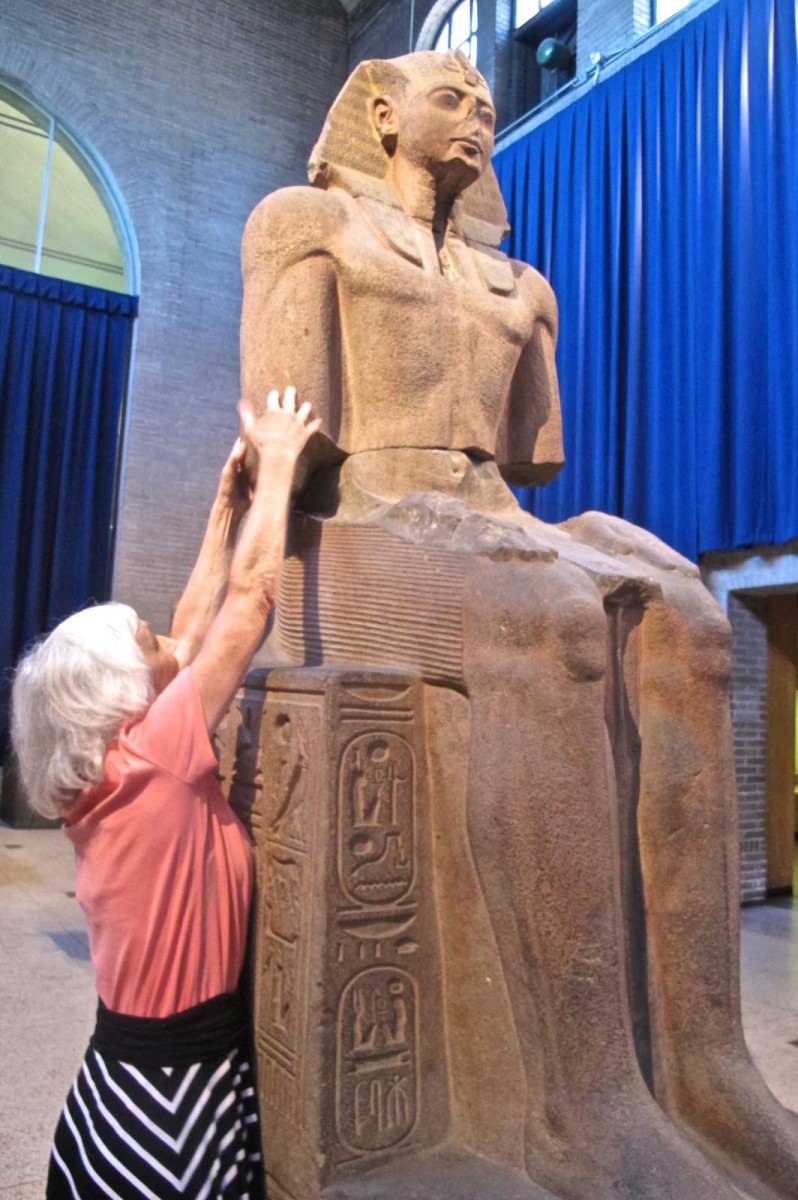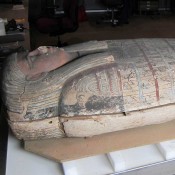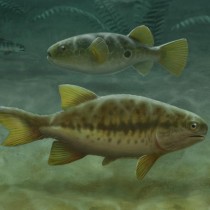Following a successful pilot season in the fall of 2012, the “Insights into Ancient Egypt” Touch Tours program at the Penn Museum in Philadelphia, designed with and for Museum visitors who are blind or have low vision, is expanding, thanks to extensive input and feedback from members of the community.
The second season of the “Insights into Ancient Egypt” Touch Tour program has begun Monday, September 30, with longer visits and a host of innovative changes. The program expands from one to two hours, as guests are invited to discover ancient Egyptian culture through a new classroom learning experience, with tactile diagrams, through connections with both long-time Museum docents and new assistant docents with visual impairment, and through new opportunities for artistic expression. The central gallery experience—exploring through touch several ancient Egyptian artifacts on display—continues with new pieces and specially made replicas.
Trish Maunder, Project Coordinator for Special Tours and a disabilities program consultant for the Museum, worked with Egyptian section Associate Curator Jennifer Wegner, the Museum’s Community Engagement Department, and many volunteer Museum docents to develop the program and its expanded offerings. Through focus groups and feedback from low and no-vision guests, she learned that participants wanted more information, educational opportunities, and even outlets for artistic expression—all included in this season’s offerings.
In a new classroom component of the program, guests will be invited to explore replicas of smaller ancient Egyptian artifacts — many used for, or associated with, mummification: a brain hook, canopic jars for internal organs, stone scarabs and other small statues. The experience also includes tactile diagrams (raised line diagrams) and opportunities to smell some of the oils used in mummification: frankincense, myrrh, and cedar oil.
The touch tours, this year facilitated by both lead and assistant (visually impaired) docents, feature close encounters with ancient Egyptian stone artifacts, including a seated statue of Ramesses II, the Goddess Sekhmet, and two sarcophagus lids, all found in the third floor Egyptian gallery. Before touching the ancient artifacts participants are asked to use sanitized hand wipes to remove oils.
Also new this year are pre-visit outreach sessions at several sites to better prepare visitors, and an art-in-response component, coordinated in partnership with several organizations including the Philadelphia Museum of Art, Allens Lane Art Center, the Main Line Art Center, and the Overbrook School for the Blind.
“Many visitors from our program last year reported a significant shift in awareness and a sense of inspiration from the ancient world,” noted Ms. Maunder. “We wanted to honor that experience, and help create opportunities for further discovery.”
Most of the fall Touch Tour programs, which run Monday mornings and afternoons (when the Museum is usually closed) through December 16, are booked, but some spaces remain for both individuals and groups with members who are living with blindness or visual impairment. For more information about the program and available times, contact Trish Maunder at 609.760.8223 or [email protected].




